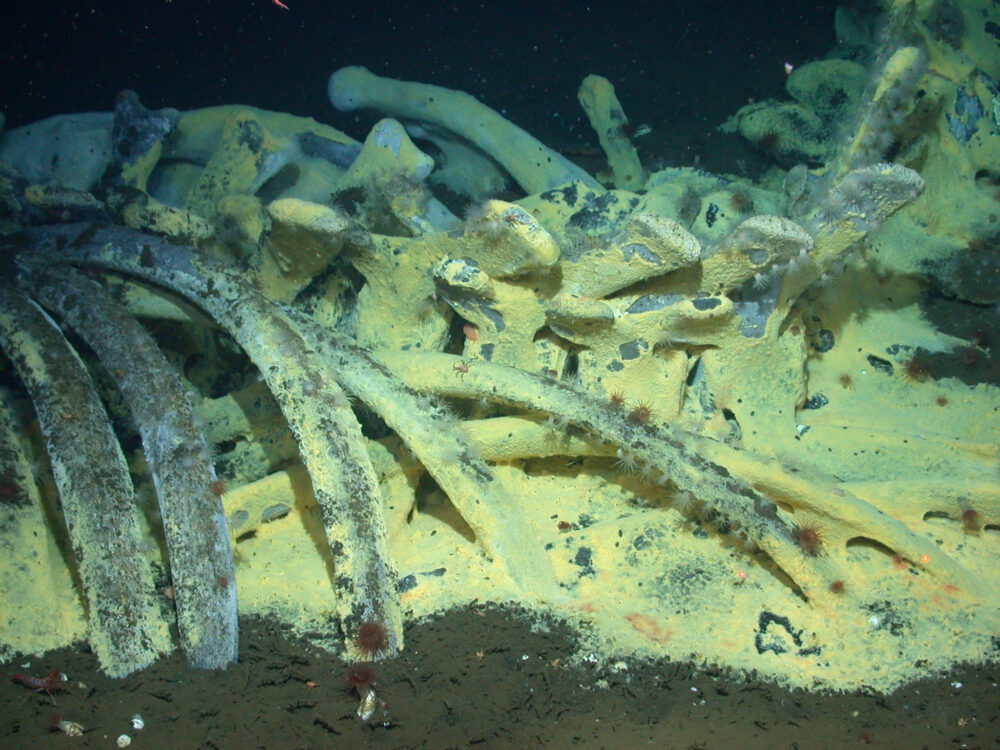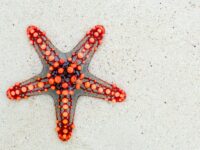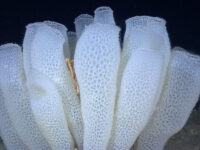It’s October 2019, and Exploration Vessel Nautilus is on its last expedition of the season, live-streaming footage from its submersible’s cameras. At 3,240 meters deep, they’re exploring the seafloor of Monterey Bay when a shape comes into view, and the team quickly erupts into enthused echoes of “ohhh, whale fall!” What lies in front of the submersible are the mostly skeletal remains of a baleen whale, morbid but a subject of delightful curiosity to these marine scientists. “Dinner is served,” one of them comments, as the camera pans to scavengers feasting on the carcass like friends and family coming together to enjoy a Thanksgiving dinner.
“Whale fall doesn’t only benefit the deep sea but can help another species that resides far off the seafloor: humans in our fight against climate change.”
Referring to the phenomenon in which whales die and sink to the seafloor, “whale fall” is a general term for a whale carcass, the process of its fall, and the formed deep-sea ecosystem. Since the first discovery of a whale fall by submersible Alvin in 1987, instances have been studied in the Pacific and Atlantic oceans — with some researchers even intentionally planting whale carcasses to further understand their effect.
What makes whale fall such a noteworthy phenomenon? For one, whales themselves are some of the largest living animals on Earth, able to have adult body masses ranging from 8 to 160 metric tons. Approximately 87% of that biomass is in lipid-rich soft tissues, making whale feasts of organic matter that are vital for low-energy and nutrient-poor deep-sea environments. In comparison to marine snow — organic matter debris from the upper ocean — whale fall transports organic matter to the deep sea 2,000 times faster and in much higher quantities.
Once a whale carcass reaches the seafloor, it attracts abundant organisms, essentially creating an ecosystem of its own whose ecological succession can be traced by four partially overlapping stages of decomposition. First, in the mobile-scavenger stage, scavengers such as hagfish and sleeper sharks eat from the intact carcass, removing soft tissues including blubber, muscle, and internal organs. In the enrichment-opportunist stage, animals like marine worms and crustaceans colonize the lipid-rich bones and organically enriched sediments in the area. In the sulfophilic “sulfur-loving” stage that can last decades, anaerobic bacterial decomposition of the lipids excretes sulfide, supporting chemoautotrophic fauna and forming a bacterial mat on which mollusks feed. Last but not least, after the depletion of organic matter, suspension feeders use the remaining skeleton as a habitat during the reef stage. Altogether, a single whale fall can continue to contribute to a deep-sea environment for at least 50 years and possibly up to a century.
“Altogether, a single whale fall can continue to contribute to a deep-sea environment for at least 50 years and possibly up to a century.”
As a result of the ecosystems it creates, whale fall is believed to have a fundamental contribution to deep-sea biodiversity. Specialized organisms have been evolving around whale falls for millions of years, changing their metabolism, growth rate, feeding behavior, and reproduction to better exploit whale carcasses. The species richness of whale fall ecosystems is estimated to be as high as 407 species, with scientists continuously recording new species. Additionally, one theory suggests that whale falls contribute to biodiversity by acting as stepping stones for faunal dispersal, allowing organisms that reside in hydrothermal vents and cold seeps to expand further by using whale falls as pit stops between distant habitats.
Whale fall doesn’t only benefit the deep sea but can help another species that resides far off the seafloor: humans in our fight against climate change. Turns out, whales are an efficient means of carbon sequestration; they accumulate carbon (an average of 33 tons of CO2 each!) in their bodies throughout their lives, and when they sink to the ocean’s bottom, that carbon is taken out of the atmosphere for centuries. With enough whales, this natural solution has comparable potential to our technology-driven climate engineering projects.
Unfortunately, whale populations are not quite thriving, having been reduced to less than one-fourth of what they once were by commercial whaling and other hazards. In order to protect them, more value needs to be placed on whales, not only for their role as carbon sinks but for all they contribute to the ocean. We need to let the whales live, and let them fall.
Image courtesy of Wikimedia Commons





